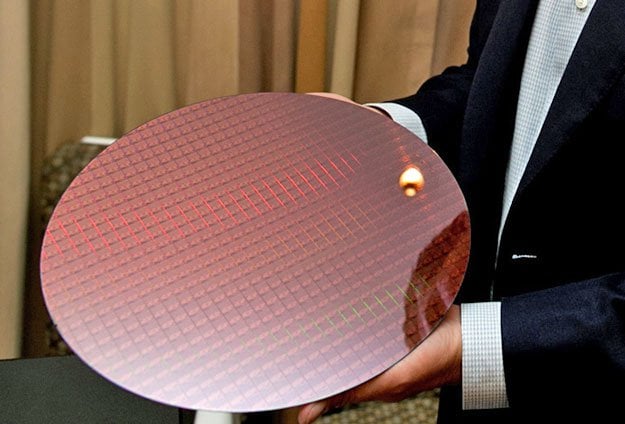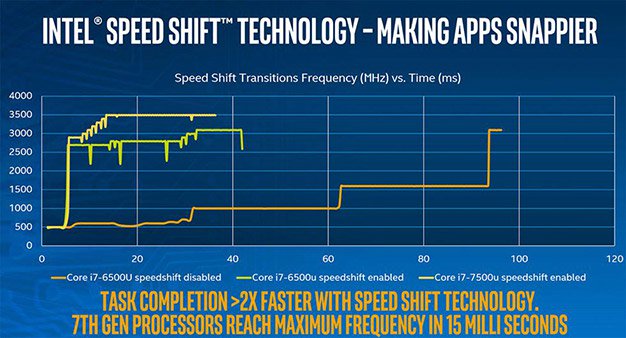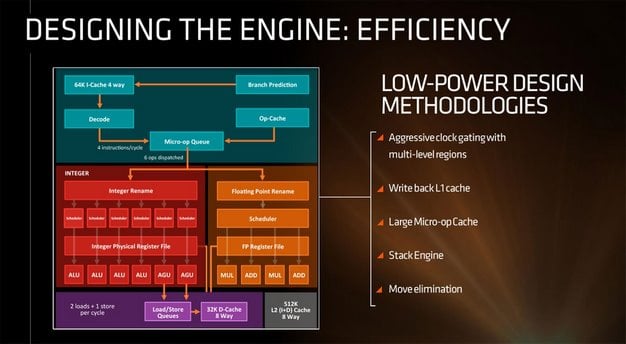- Sep 17, 2013
- 1,492
There has been quite a bit of noise and plenty of confusion online lately, since news broke that Microsoft would only be fully supporting Intel’s and AMD’s next-generation processor microarchitectures – codenamed Kaby Lake and Zen, respectively – with Windows 10. Some publications and scores of readers pegged the decision as a pure marketing move by Microsoft and derided the company for forcing users to upgrade to Windows 10.
On the surface, we understand why such a statement would make some people cringe. Not supporting Windows 7, which remains the second most popular desktop OS with enthusiasts, or the much-maligned Windows 8, means consumers will technically have fewer options and less choice when these processors actually hit the market. But that’s not necessarily the case.
image: http://hothardware.com/ContentImages/NewsItem/38580/content/Intel-Kaby-Lake-7th-gen-wafer.jpg

A Wafer Of Intel Kaby Lake Processors
If you remember, Intel’s Skylake was originally supposed to be locked to Windows 10 at one point too, but that policy was changed back in March. The Skylake announcement caused quite an uproar as well, which was somewhat more expected considering Windows 10 was only a few weeks old when Skylake launched. But there is a distinction to be made between “support” and “compatibility”. Even if Microsoft stuck to its original decision, that didn’t mean Windows 7 and 8 would have suddenly stopped working on Intel Skylake-based processors. It just meant future updates and optimizations wouldn’t be made to the older OSes as they relate to Intel's new Skylake architecture.
There are some additional wrinkles to consider with Kaby Lake that Zen that no one seems to be talking about, however. Both of these microarchitectures have new features and technologies that require significant updates to Windows 10 to optimally function. Kaby Lake, for example, has updates to Intel’s Speed Shift technology that make it possible to change power states more quickly than Skylake. Because Kaby Lake is able to make Speed Shift transitions measurably faster, 7th Gen Core processors based on the architecture will be able to ramp up (and spool down) clocks in as quickly as 15ms. While Speed Shift is enabled in hardware, it requires OS-level hooks to function properly. In Intel’s own presentations in the lead-up to Kaby Lake’s unveiling, the company mentioned that Windows 10 Redstone 1 was used to evaluate the latest updates to Speed Shift in their performance data.
image: http://hothardware.com/ContentImages/NewsItem/38580/content/small_kaby-lake-performance-0e.jpg

Kaby Lake Features Enhancements To Speed Shift
Another thing to consider is Intel’s Turbo Boost Technology 3.0, which was introduced with Broadwell-E. With Turbo Boost Max 3.0 technology, single-thread performance can be improved by identifying the fastest core on a particular processor die and prioritizing critical workloads for that core. With Turbo Boost 3.0, not only does the processor’s frequency ramp up when needed, but workloads are also directed to the fastest possible core available. As it stands today, if you don't have Redstone 1, Turbo Boost Max 3.0 technology requires the installation of a driver and secondary utility that launches with Windows. We assume some form of Turbo Boost 3.0 will be implemented on Kaby Lake-based 7th Gen Core processors for desktop systems as well, and ideally, support for that technology would be baked right into the operating system.
image: http://hothardware.com/ContentImages/NewsItem/38580/content/small_amd-zen-throughput-3.jpg

AMD's Zen Supports Simultaneous Multi-Threading
For an operating system to optimally support AMD’s Zen-based processors, major updates are likely necessary as well, over and above basic driver support. Zen has fine-grained clock gating with multi-level regions throughout the chip. And Zen will also mark the introduction of newer Simultaneous Multi-Threading technology for AMD chips. To properly leverage the tech in Zen, Microsoft will likely have to make updates to the Windows kernel and system scheduler, which is more involved than a driver update. If you remember, Microsoft had to do something similar to add proper support for Bulldozer-based processors with Windows 7.
image: http://hothardware.com/ContentImages/NewsItem/38580/content/small_amd-zen-efficiency-2.jpg

Efficiency Enhancements In AMD's Zen Architecture
At this point, it makes sense to discontinue support for older operation systems, doesn’t it? It requires more resources and time to qualify kernel and system scheduler updates, than it does third-party drivers, and Windows 7 was released over seven years ago. Windows 8 is only about 4 years old, but it was panned by virtually everyone and is fundamentally similar to Windows 10 under the hood. Considering the age of Windows 7 and lackluster reception for Windows 8, it’s probably better for virtually all consumers if Microsoft focuses their efforts for next-generation processor architectures on Windows 10. I’m sure there are corporate customers that would like to remain on Windows 7 and incorporate next-gen hardware into their infrastructure, but they are probably few and far between considering mainstream support has ended for Windows 7, and extended support for Windows 7 SP1 ends in a few years.
Also note, that tying Kaby Lake and Zen to Windows 10 doesn’t preclude users from installing other operating systems, obviously. Older versions of Windows and alternative operating systems will still install and run on Kaby Lake and Zen – they are X86 processors, after all. Older versions of Windows won’t be optimized for the platforms and won’t receive future updates, however. It's no different than running Windows XP on a Skylake-based CPU today.
On the surface, we understand why such a statement would make some people cringe. Not supporting Windows 7, which remains the second most popular desktop OS with enthusiasts, or the much-maligned Windows 8, means consumers will technically have fewer options and less choice when these processors actually hit the market. But that’s not necessarily the case.
image: http://hothardware.com/ContentImages/NewsItem/38580/content/Intel-Kaby-Lake-7th-gen-wafer.jpg

A Wafer Of Intel Kaby Lake Processors
If you remember, Intel’s Skylake was originally supposed to be locked to Windows 10 at one point too, but that policy was changed back in March. The Skylake announcement caused quite an uproar as well, which was somewhat more expected considering Windows 10 was only a few weeks old when Skylake launched. But there is a distinction to be made between “support” and “compatibility”. Even if Microsoft stuck to its original decision, that didn’t mean Windows 7 and 8 would have suddenly stopped working on Intel Skylake-based processors. It just meant future updates and optimizations wouldn’t be made to the older OSes as they relate to Intel's new Skylake architecture.
There are some additional wrinkles to consider with Kaby Lake that Zen that no one seems to be talking about, however. Both of these microarchitectures have new features and technologies that require significant updates to Windows 10 to optimally function. Kaby Lake, for example, has updates to Intel’s Speed Shift technology that make it possible to change power states more quickly than Skylake. Because Kaby Lake is able to make Speed Shift transitions measurably faster, 7th Gen Core processors based on the architecture will be able to ramp up (and spool down) clocks in as quickly as 15ms. While Speed Shift is enabled in hardware, it requires OS-level hooks to function properly. In Intel’s own presentations in the lead-up to Kaby Lake’s unveiling, the company mentioned that Windows 10 Redstone 1 was used to evaluate the latest updates to Speed Shift in their performance data.
image: http://hothardware.com/ContentImages/NewsItem/38580/content/small_kaby-lake-performance-0e.jpg

Kaby Lake Features Enhancements To Speed Shift
Another thing to consider is Intel’s Turbo Boost Technology 3.0, which was introduced with Broadwell-E. With Turbo Boost Max 3.0 technology, single-thread performance can be improved by identifying the fastest core on a particular processor die and prioritizing critical workloads for that core. With Turbo Boost 3.0, not only does the processor’s frequency ramp up when needed, but workloads are also directed to the fastest possible core available. As it stands today, if you don't have Redstone 1, Turbo Boost Max 3.0 technology requires the installation of a driver and secondary utility that launches with Windows. We assume some form of Turbo Boost 3.0 will be implemented on Kaby Lake-based 7th Gen Core processors for desktop systems as well, and ideally, support for that technology would be baked right into the operating system.
image: http://hothardware.com/ContentImages/NewsItem/38580/content/small_amd-zen-throughput-3.jpg

AMD's Zen Supports Simultaneous Multi-Threading
For an operating system to optimally support AMD’s Zen-based processors, major updates are likely necessary as well, over and above basic driver support. Zen has fine-grained clock gating with multi-level regions throughout the chip. And Zen will also mark the introduction of newer Simultaneous Multi-Threading technology for AMD chips. To properly leverage the tech in Zen, Microsoft will likely have to make updates to the Windows kernel and system scheduler, which is more involved than a driver update. If you remember, Microsoft had to do something similar to add proper support for Bulldozer-based processors with Windows 7.
image: http://hothardware.com/ContentImages/NewsItem/38580/content/small_amd-zen-efficiency-2.jpg

Efficiency Enhancements In AMD's Zen Architecture
At this point, it makes sense to discontinue support for older operation systems, doesn’t it? It requires more resources and time to qualify kernel and system scheduler updates, than it does third-party drivers, and Windows 7 was released over seven years ago. Windows 8 is only about 4 years old, but it was panned by virtually everyone and is fundamentally similar to Windows 10 under the hood. Considering the age of Windows 7 and lackluster reception for Windows 8, it’s probably better for virtually all consumers if Microsoft focuses their efforts for next-generation processor architectures on Windows 10. I’m sure there are corporate customers that would like to remain on Windows 7 and incorporate next-gen hardware into their infrastructure, but they are probably few and far between considering mainstream support has ended for Windows 7, and extended support for Windows 7 SP1 ends in a few years.
Also note, that tying Kaby Lake and Zen to Windows 10 doesn’t preclude users from installing other operating systems, obviously. Older versions of Windows and alternative operating systems will still install and run on Kaby Lake and Zen – they are X86 processors, after all. Older versions of Windows won’t be optimized for the platforms and won’t receive future updates, however. It's no different than running Windows XP on a Skylake-based CPU today.